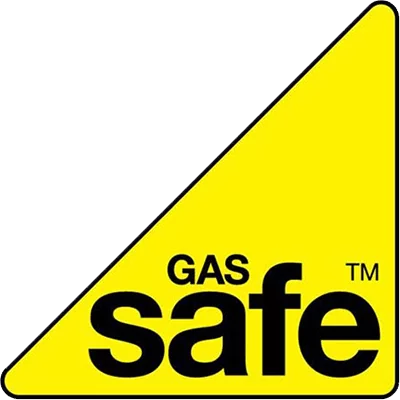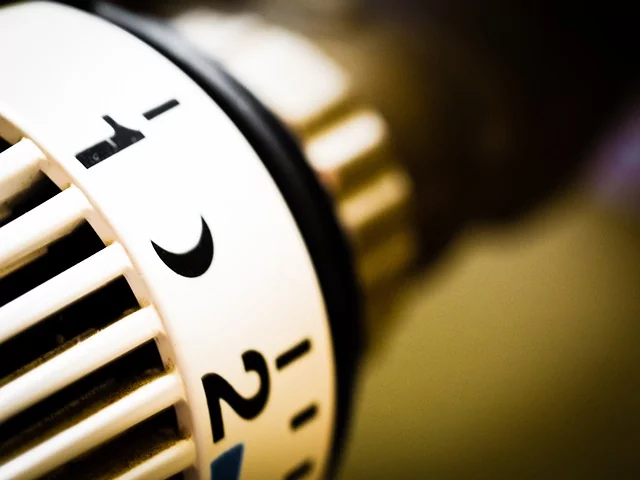Powerflushing is a process used to clean your central heating system, removing sludge, rust, and other debris that can build up over time and decrease the efficiency of your boiler and heating system itself. It is an essential maintenance task that can help prolong the life of your boiler and radiators, as well as improve the overall performance of your heating system. Knowing how often you should powerflush can ensure that you reap the benefits of this service without excessive costs.
Various factors determine the frequency of powerflushing, such as the age and type of your central heating system, the quality of the water in your area, and whether you have previously experienced issues related to power flushing due to sludge or debris buildup. As a general guideline, it is recommended to have your old central heating system powerflushed every 5 to 6 years. However, this can vary depending on your specific situation.
It is crucial to watch out for warning signs that indicate your system may be due for powerflushing. These include cold spots on your radiators, unusually hot water, high fuel bills, or noises coming from the boiler. If you experience any of these issues, it is essential to act promptly and arrange for a professional to assess your central heating system to determine whether powerflushing is necessary.
Understanding Powerflushing
Significance of Power Flushing
Powerflushing is a process that helps maintain the efficiency of your central heating system. As the system runs, a buildup of sludge, rust, and other debris can accumulate in your central heating systems’ pipes, radiators, and boiler. This buildup can decrease the efficiency of your central heating system, compromise its components, and lead to higher energy bills.
When you perform a power flush, a high-powered pump is used to circulate a cleaning solution through the system, dislodging any debris and sludge inside. This process effectively clears pipelines radiator valves, pipes and radiators throughout, and boilers, allowing your system to function more efficiently and extend its lifespan.
Here are some indicators that your central heating system may require a power flush:
Cold spots on your radiators
Noisy boiler or pipes
Radiators taking longer to heat up
Discolored water when bleeding the radiators
Components Affected by Powerflushing
Here are the main components of your central heating system that can benefit from a power flush:
Pipes: Removing sludge and debris from pipes helps prevent blockages and improves water flow, ensuring optimal performance of the heating system.
Radiator: A power flush clears any buildup inside the radiator, allowing it to heat up faster and distribute heat more efficiently.
Boiler: Flushing the system removes residues that could compromise the boiler’s performance, prolonging its life and preventing potential breakdowns.
In summary, powerflushing is essential for maintaining the efficiency and health of your central heating system. By the power flushing process and regularly performing this process, you can help prevent issues with your pipes, radiators, and boiler and contribute to a more efficient and reliable heating system for your home.
Determining the Need for Powerflushing
Symptoms of Circulation Issues
One of the first steps in determining if your heating system needs powerflushing is to look for signs of circulation issues. Here are some common indicators:
Cold spots: If you notice unevenly heated radiators with cold spots, particularly at the bottom, there could be a buildup of sludge and debris affecting circulation.
Noisy radiators: Unexplained noises, such as knocking or banging sounds, are often a result of trapped air or poor water circulation.
Cold radiators: When your radiators remain cold, even when your heating is on, it could indicate a circulation issue within your central heating system.
Diagnosing Your Heating System
Before making a decision, you should consult a heating engineer to diagnose your system properly. Here are the steps they’ll follow:
Check for dirty water: A heating engineer will inspect the water in your system to see if it’s discolored or contains any sludge or debris.
Inspect radiators: The heating engineer will check all radiators for cold spots, noisy operation, and inefficient heating performance.
Test pump operation: The pump is essential for circulating water throughout your system. The engineer will ensure it’s working effectively, without any issues.
Issue Symptom Solution Cold Spots Uneven heating of radiators Powerflushing Noisy Radiators Banging, knocking sounds Powerflushing, bleeding radiators Cold Radiators Radiators not heating up Powerflushing, inspecting central heating system
Regular maintenance of your heating system can help avoid these circulation issues and keep your radiators running efficiently. An annual check-up by a qualified heating engineer will identify and resolve any trouble before it becomes severe.
When executed correctly, powerflushing is a worthwhile investment that improves your heating system’s efficiency and longevity. However, always consult with a professional as each individual case may vary.
The Powerflushing Process
Steps of Powerflushing a System
Powerflushing is an essential procedure to maintain the efficiency of your heating system. It involves a series of steps to ensure a thorough cleaning of your radiators and boiler:
Turn off your heating system: Ensure that your boiler and radiators are switched off, allowing them to cool down before starting the process.
Drain the system: Release any water and debris from your radiators by using the drain valve at the lowest point of your system.
Connect the powerflushing pump: Attach the pump to your central heating system, typically to your circulator pump or boiler.
Add a chemical flush: Pour a chemical flush solution into the powerflushing pump, which will help break down and remove any accumulated debris.
Powerflush the system: Turn on the pump to circulate the solution through your radiators and boiler. This process could take a few hours, depending on the size and complexity of your system.
Drain and flush with water: Once the powerflushing is complete, drain the system from the same point you connected the pump, and rinse it with clean water to remove any remaining debris and chemicals.
Refill the system: Using a clean source of water, refill your heating system, ensuring that it reaches the recommended pressure levels.
Choosing the Right Chemicals
Selecting the appropriate chemicals for your powerflushing process is crucial for optimal results. Here are some recommendations:
System cleaner: This chemical targets and breaks down sludge and debris accumulated within your radiator and boiler. It is a must-have for any powerflushing process.
Scale reducer: If you live in an area with hard water, you may have limescale buildup in your heating system. A scale reducer will help eliminate limescale and prevent further buildup.
Corrosion inhibitor: Prevent rust and corrosion within your radiators and pipes by using a corrosion inhibitor. It can prolong the lifespan of your system components.
Remember, consulting a professional before choosing and using chemicals is essential to avoid damaging your heating system. With regular powerflushing, you will maintain the efficiency and longevity of your radiators and boiler.
Post-Powerflushing Considerations
Maintenance After Powerflushing
After a successful powerflush, it’s essential to maintain your central heating system to optimize its efficiency and lifespan. Regular maintenance helps prevent buildup of sludge and debris, contributing to better energy efficiency. Here are a few tips to help you maintain your system post-powerflushing:
Use a system inhibitor. Adding an inhibitor to your central heating system can help prevent corrosion and scale formation. It’s essential to check the inhibitor levels annually and top-up if needed.
Schedule regular maintenance checks with a Gas Safe registered engineer. This ensures your central heating system is running smoothly and helps identify potential issues before they worsen.
Monitor the temperature of your radiators. In case you notice cold spots, it may be an indication of sludge buildup or trapped air. Bleed the radiators, if necessary, to achieve even heating.
Keep an eye on your energy bills. An increase in energy bills can signal a decrease in your system’s energy efficiency, which might be a result of sludge or debris buildup.
When to Schedule the Next Powerflush
To maintain optimal performance and efficiency, it’s essential to plan your next powerflush. The frequency with which you should schedule a powerflush depends on various factors, such as:
System age: Older systems might require powerflushing more frequently, around every 5-6 years, to maintain efficiency and prevent major issues.
Use of inhibitors: If you’re using inhibitors regularly, you can extend the time between powerflushes, as they help protect your system from corrosion and scale buildup.
Type of boiler: Some modern, high-efficiency boilers are more sensitive to debris and might require powerflushing more frequently.
Gas Safe engineer recommendations: Your Gas Safe registered engineer can inspect your central heating system and provide tailored recommendations for the ideal powerflushing schedule based on the specific condition of your system.
Finally, it’s essential to stay vigilant and pay attention to warning signs such as inconsistent heating, noisy pipes, or increased energy bills. If you notice any of these issues, consult a Gas Safe registered engineer to evaluate your entire system and determine if a powerflush is necessary.


